Histories of the architecture and urban landscape of medieval Paris have often concentrated on the impressive works of patronage of male rulers, for example Louis IX (1214–1270) and Charles V (1338–1380). But the paradigms we inherit are inflected with centuries of male-focused policies, histories, and social conceptions, often leading scholars to overlook or even erase women’s important contributions to the cityscape of Paris. This project seeks to undo this erasure and demonstrate that women, their bodies, their commissions, and their interactions were not only there, but were simply everywhere. It was not at all exceptional to see their marks on the urban landscape, their presence in work spaces, their bodies in processions in the streets, their tombs in the chapels of ecclesiastical spaces, and their generosity on display throughout the city. By mapping these sites, the many women patrons, workers, residents, and monastics come into view together.
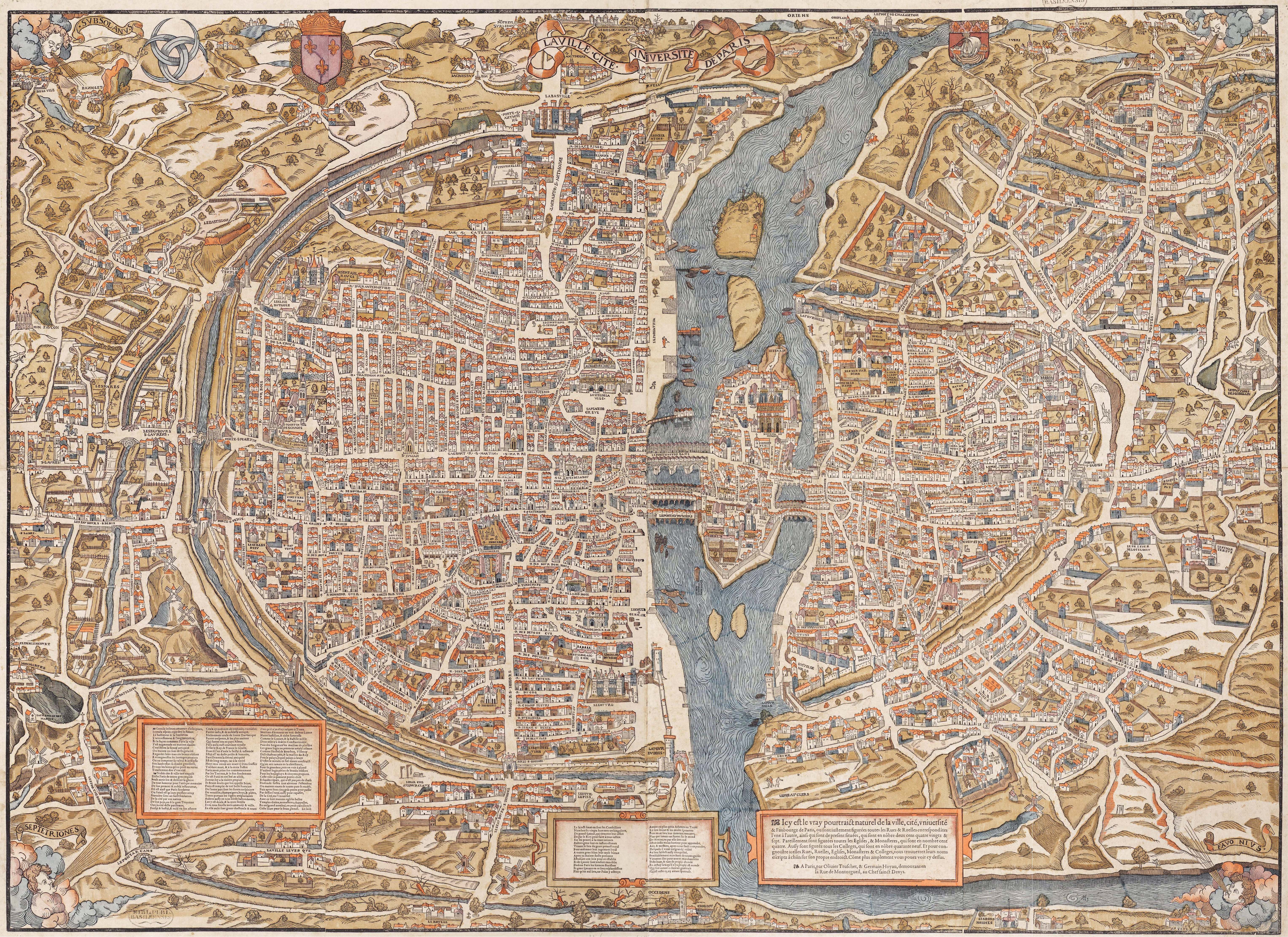
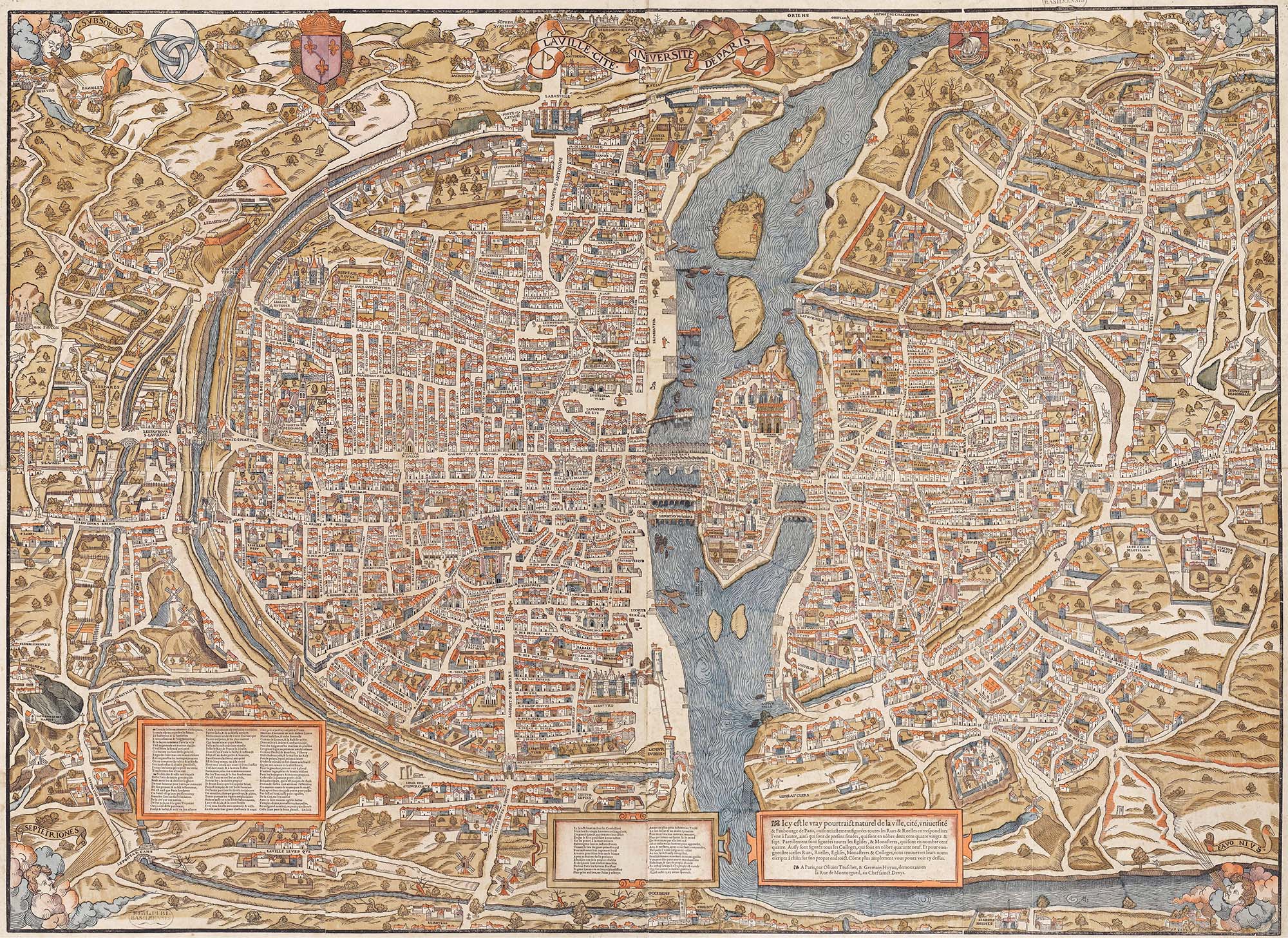
Saint-Antoine-des-Champs
Founded in the twelfth century as a home for repentant sex workers, Saint-Antoine-des-Champs later featured a church dedicated to the anchorite Saint Antoine. Jeanne de France and Bonne de France were both buried at this site in 1360.
Present-day location: 184 Rue du Faubourg Saint-Antoine
Read More
Present-day location: 184 Rue du Faubourg Saint-Antoine
Erembourc de Braières, l’orfaverresse (goldsmith)
La moitié de la rue Tybaut-aus-Dez, taxed 24 s., 1292. Erembourc is located here in the neighborhood with other goldsmiths.
Read More
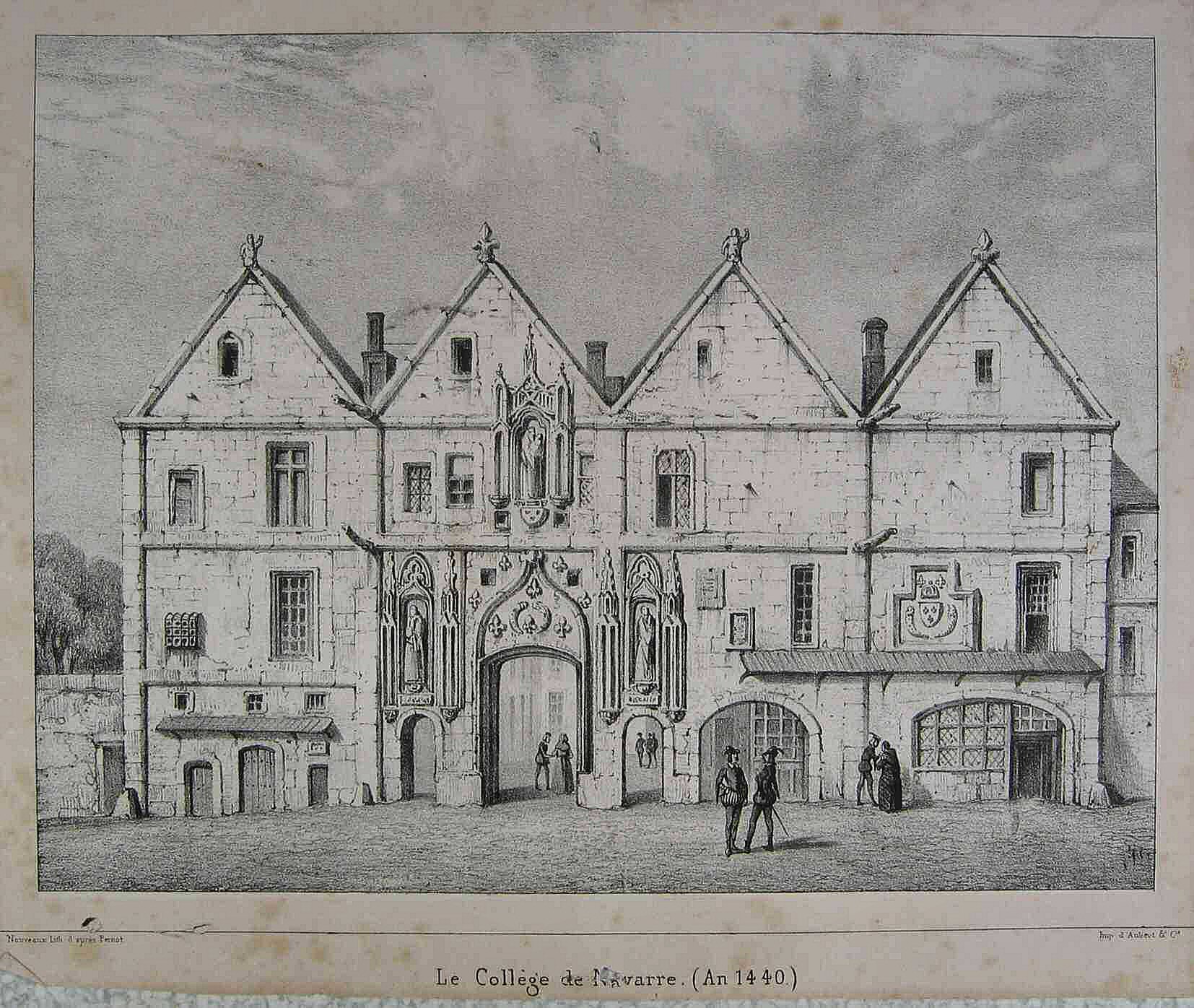
Collège de Navarre
The Collège de Navarre was erected between 1309-1315 under the testamentary orders of Queen Jeanne de Navarre et Champagne (1273–1305), wife of Philippe IV (1268-1314). That this institution displayed female support of education on such a monumental scale adds to the innovative nature of the commissions. A mother’s role in the education of her children was one that these queens’ saintly and learned ancestor, Louis IX, had frequently espoused.
Present-day location: 5 Rue Descartes
Read More
Present-day location: 5 Rue Descartes
Coustance, la percheminière (parchment maker)
Rue aus Lavendières, taxed 12 deniers, 1292.
Read More
Collège de Bourgogne
The Collège de Bourgogne was built according to the wishes of a deceased queen–Jeanne de Bourgogne et Artois, daughter-in-law to Jeanne de Navarre, and wife of Philippe V, and it was dedicated in 1333.
Present-day location: 12 Rue de l'École de Médecine
Read More
Present-day location: 12 Rue de l'École de Médecine
Hôtel de Nesle (Jeanne de Bourgogne et Artois)
Jeanne de Bourgogne had inherited her hotel, known as the Hôtel de Nesle, before she was queen when she and her husband Philippe were still just countess and count of Burgundy. It was to this residence, located on the banks of the Seine in a tower of the city wall, that she retired after her husband’s death in 1322. In later years, the Hôtel de Nesle and Hôtel de Navarre were described as two of the most lovely residences in Paris.
Present-day location: 11 Quai de Conti
Read More
Present-day location: 11 Quai de Conti
Dame Estienne, la gravelière
En Darne-Estat, taxed 12 sous, 1292. This road is later known as rue Greneta.
Read More
Hôtels de Navarre, Evreux
The Hôtel de Navarre was located on the rue Saint-André-des-Arts, near the porte de Bucy and the porte de Saint-Germain-des-Prés. Jeanne de Navarre had kept a separate household from her husband’s and resided in this hotel of the kings of Navarre when in Paris. In later years, the Hôtel de Navarre was described as one of the most lovely residences in Paris, enabling Jeanne de Navarre to fund the foundation of the Collège de Navarre for the most part from its sale.
Read More
Hôtel d’Artois (Mahaut d’Artois and Jeanne de Bourgogne et Artois)
Mahaut d'Artois owned the Hôtel d'Artois and generously donated land from the site for the Hôpital Saint-Jacques-aux-Pèlerins. On February 18, 1319, Mahaut's daughter, Jeanne de Bourgogne et Artois, queen of France and wife of Philippe V, laid the fist stone for the foundation of the hôpital.
Later, during Jeanne's 1330 funeral procession, her body would have passed by her former Hôtel d’Artois (now the residence of her daughter and heir, Jeanne de France, countess of Artois and Burgundy (1308–49)).
Present-day location: 133 Rue Saint-Denis
Read More
Present-day location: 133 Rue Saint-Denis
Le Temple
Queen Clémence de Hongrie (1293-1328), wife of Louis X, resided at this estate after the death of her husband in 1316. Her post-mordem inventory records rich collections of jewels, plate, textiles, reliquaries, and figural metalwork.
Present-day location: 7 Rue Perrée
Read More
Present-day location: 7 Rue Perrée
The Jacobins
A major Dominican church in Paris, numerous medieval women chose this as a burial site.
Present-day location: 160 Rue Saint-Jacques
Read More
Present-day location: 160 Rue Saint-Jacques
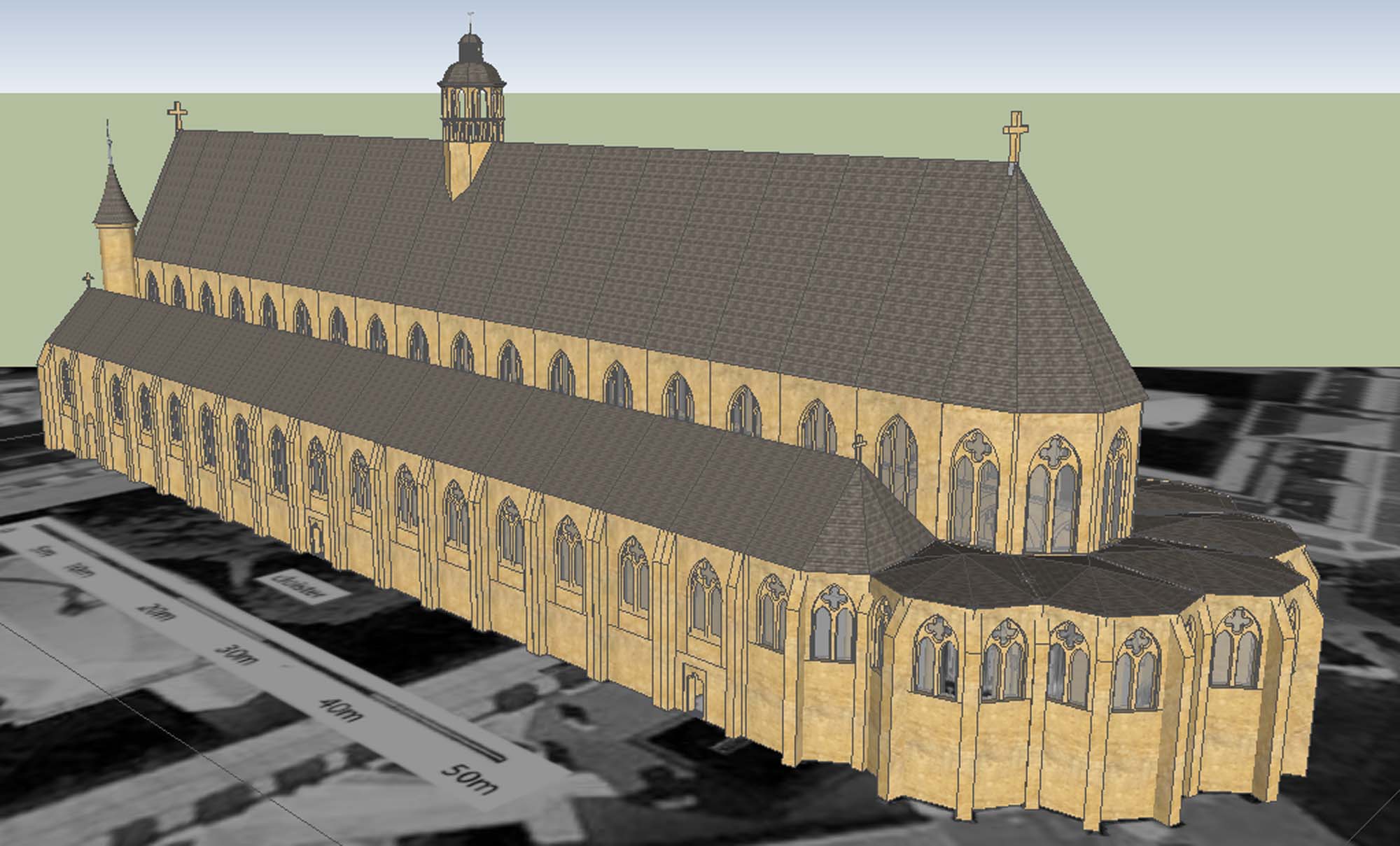
The Cordeliers
The Cordeliers was the popular name of the male Franciscan monastic house representing the order in Paris whose church was dedicated to Sainte-Marie-Madeleine. It is the site of what we are calling a burial line of women.
Present-day location: 15 Rue de l'École de Médecine
Read More
Present-day location: 15 Rue de l'École de Médecine
Sainte-Chapelle
Marie de Brabant’s (1255-1322) 1274 marriage to Philippe III recorded by Guillaume de Nangis–the first to take place in the recently completed Sainte-Chapelle–attracted noble guests (described in elegant detail) from across Europe.
Read More
Perronnele, la maçonne (mason)
Also Oudinnet, son fuiz; Maalot, sa pucèle (young woman).
En l'entrée de rue Neuve, Perronnele was taxed 36 sous and the others 12 sous, 1292.
Read More
Marguerite, la mortelière
Near Place de Grève and rue de la Vannerie, taxed 12 deniers, 1292. Perhaps her proximity to the river helped her get water, sand, and gravel.
Read More
Ermenjart, la charpentière
Et 2 fames veuves avec lui (carpenters). La rue Giefroi-l'Engevin, taxed 3 sous, 1292.
Read More
Roberge et Jeanne, libraires (book traders)
Mother (Roberge) and sister (Jeanne) of Nicolas d'Estampes, la rue Neuve-Notre-Dame, together taxed 20 sous, 1292.
Read More
Thomasse, la charpentière (carpenter)
En la Grand-Rue . . . par devers Saint-Benoiet, taxed 12 deniers, 1292.
Read More
The Cordelières (St-Marcel/Lourcine)
Women’s monastic houses were in many ways the equivalents of the college for men, and of course women patronized monastic houses for women in Paris. The Cordelières, or the Filles de Saint Claire de la pauvreté Notre-Dame, was such an institution patronized by Queen Marguerite de Provence (1221–1295), widow of Louis IX, and her daughter Blanche de la Cerda (1252–1320).
Present-day location: 54-56 Rue Pascal
Read More
Present-day location: 54-56 Rue Pascal
Jehanne, la charpentière (carpenter)
Du palais de Termes, tout contreval, jusques à la Grand-Rue, taxed 12 deniers, 1292.
Read More
Hodierne, la coustière (feather bed or cushion maker)
La rue aus Maçons, taxed 2 sous, 1292.
Read More
Emelot, la fileresse de soie
Revenant ou Perron et pardevant l'Abbaye, jusques à Saint-Père, taxed 2 sous, 1292.
Read More
Asceline, de Roye, l’encrière (ink maker)
La rue de Saint-Victor, de Saint-Nicolas de Chardonnay, jusques à la Croiz-Hemon . . . , taxed 2 sous, 1292.
Read More
Helissent, la broderesse (embroiderer)
En la Foulerie de ça et de là, jusques à Berbéel, taxed 2 sous, 1292.
Read More
Marote, la broderesse (embroiderer)
En la Foulerie de ça et de là, jusques à Berbéel, taxed 2 sous, 1292.
Read More
The Béguinage
Founded by Louis IX after returning from crusade in 1254, by the end of his reign around four hundred women lived at the main beguinage on the Right Bank.
Present-day location: 4 Rue du Fauconnier
Read More
Present-day location: 4 Rue du Fauconnier
Marguerite, la chanevacière (hemp textile maker) et ses enfanz
la rue de la Croiz-de-Tiroer, taxed 7 livres 15 sous, 1292.
Read More
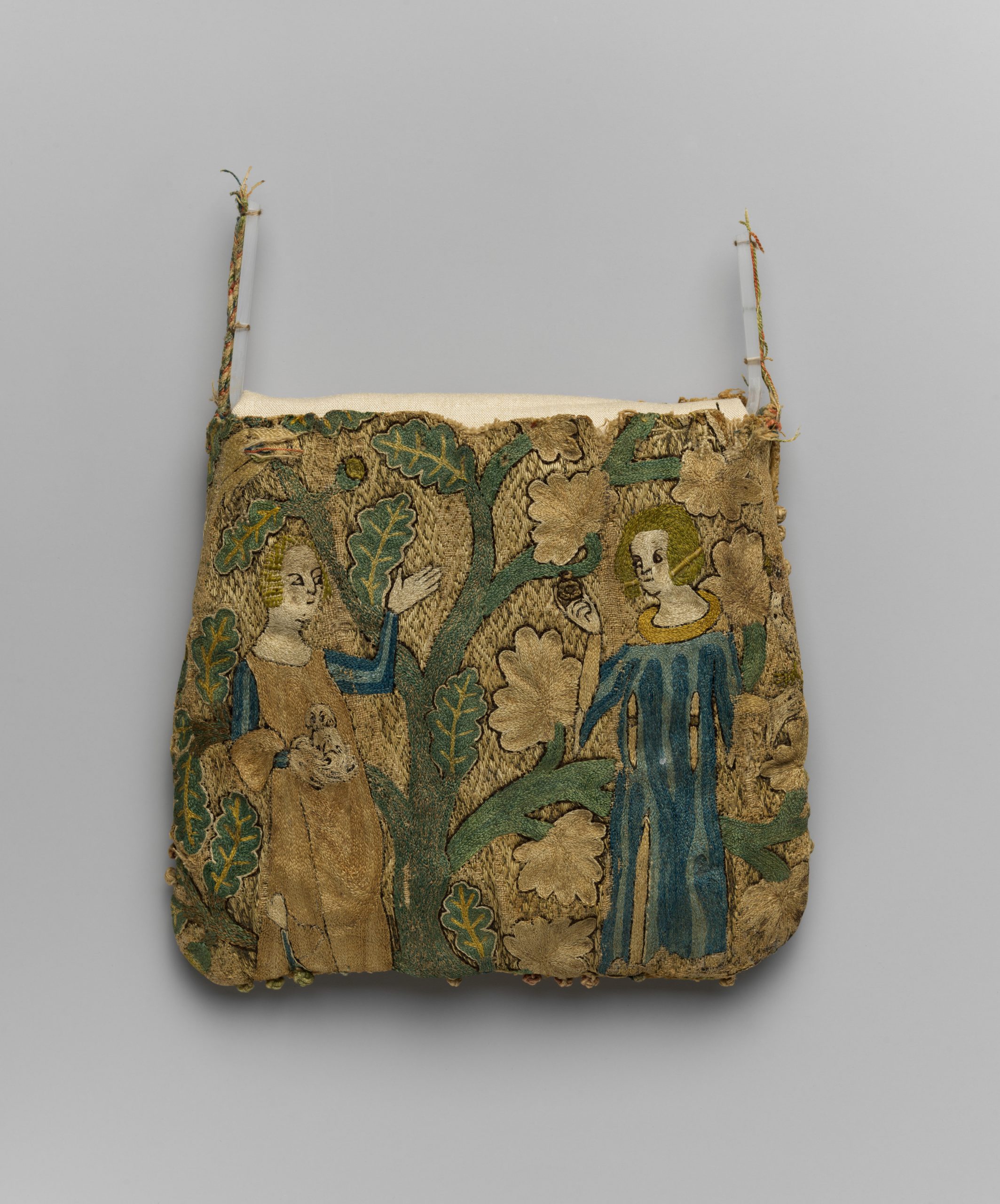
Silk Production
Mapping the concentrations of workers in the silk industry, where non-elite women were central figures, helps to highlight neighborhoods where women including Beguines and many others featured prominently.
Read More
Dame Huitace, la lanière (leather strap maker)
la rue aus Prouvoires, taxed 50 sous, 1292.
Read More
1318 Procession from the (former) Porte Saint-Denis to Saint-Magloire
Queen Clémence de Hongrie (1293–1328), Queen Jeanne de Bourgogne et Artois (1292–1330), Blanche de Bretagne (1271–1327), Mahaut d’Artois (1268–1329), and Pernelle de Sully, Countess de Dreux (c. 1285–1338) participated in a solemn procession on July 9, 1318. Torrential rains had ruined crops and washed out roads and bridges, and chroniclers recorded people starving in the streets.The procession began at the great Porte Saint-Denis, wound through streets decorated for the event along the rue Oues and then right down the rue Salle-au-Comte, entering Saint-Magloire through the cemetery in the back. The pace was slow with stops along the route to sing and pray. Clerics transferred the arm bone of Saint Magloire from an older wooden reliquary to a beautiful new silver-gilt one, and then the women each offered gifts like jeweled and enameled clasps, silk textiles, and silver-gilt lamps upon the altar.
Saint-Magloire present-day location: 88 Rue Saint Denis
Read More
Saint-Magloire present-day location: 88 Rue Saint Denis
Ameline, la courraière (belt maker)
la Grant-Rue devers les Filles-Dieu, taxed 7 sous, 1292.
Read More
Ameline, la cordoanière (leather shoe maker)
la porte Saint-Merri jusques au bout de rue Neuve, taxed 8 sous, 1292.
Read More
Richeut, la lacerresse (maker of fine laces)
la rue Auberi-le-Bouchier, taxed 10 sous, 1292.
Read More
Aaliz, la boursière (purse maker)
Du coing de Mibray jusques au coing Saint-Meri, taxed 2 sous, 1292.
Read More
Mahcut, la feutrière (felt maker)
la moitié de la Buffeterie par devers S. Marri, taxed 4 livres and 12 sous, 1292.
Read More
Aveline, la chapelière de feutre (felt hat maker)
. . . du bout de la rue Sainte-Katerine, jusques au bout de la Hyaumerie, taxed 30 sous, 1292.
Read More
Erembourc, la chanevacière (hemp textile maker)
la rue de la Ferronnerie, taxed 16 sous, 1292.
Read More
Hôpital Saint-Jacques-aux-Pélerins
On February 18, 1319, Jeanne de Bourgogne et Artois, as queen of France and wife of Philippe V, laid the first stone for the foundation of the new Hôpital Saint-Jacques-aux-Pèlerins to accommodate pilgrims on their way to or from Santiago de Compostela and to provide a place to meet and worship for the local Confrèrie dedicated to Saint Jacques. During the dedication, Queen Jeanne was surrounded by her mother, Mahaut d’Artois, and three of Jeanne’s four daughters and some accounts say each one in turn laid an additional stone.
Present-day location: 111 Rue Saint Denis
Read More
Present-day location: 111 Rue Saint Denis

Les Halles des Champeaux
As it is today, Paris was a hub for fashion in the fourteenth century, and an exciting primary-source account describes such delectable textiles that were available in a multi-story mall with vendors offering a wide variety of clothes and adornments, perhaps even purses like the one mentioned here.
Present-day location: 21 Rue Berger
Read More
Present-day location: 21 Rue Berger
View All Locations
Women's Monastic Houses
- The Filles-Dieu
- Saint-Antoine-des-Champs
- Saint-Pierre de Montmartre
- The Filles Repenties
- The Cordelières (St-Marcel/Lourcine)
Beguines
- Benoite, la béguine
- Dame Ade, la béguine
- The Béguinage
Makers
- Tyfainne, la florerresse de coiffes
- Erembourc de Braières, l’orfaverresse (goldsmith)
- Coustance, la percheminière (parchment maker)
- Dame Ade, la tabletière (ivory carver)
- Jehanne, la boutonnière (button maker)
- Marie, la charpentière (carpenter)
- Dame Estienne, la gravelière
- Anès, la chapelière (milliner)
- Tiece, la ferronne (ironworker)
- Perronnele, la maçonne (mason)
- Aaliz, la charpentière (carpenter)
- Marguerite, la mortelière
- Ermenjart, la charpentière
- Jehanne, la charpentière (carpenter)
- Roberge et Jeanne, libraires (book traders)
- Thomasse, la charpentière (carpenter)
- Jehanne, la charpentière (carpenter)
- Hodierne, la coustière (feather bed or cushion maker)
- Emelot, la fileresse de soie
- Sainte, la paintre (painter)
- Asceline, de Roye, l’encrière (ink maker)
- Helissent, la broderesse (embroiderer)
- Marote, la broderesse (embroiderer)
- Dame Gile, la maçonne (mason)
- Ysabelot, la verrière (glass maker)
- Anès qui fet chapiaus (milliner)
- Marguerite, la chanevacière (hemp textile maker) et ses enfanz
- Jehanne, la verrière (glass maker)
- Dame Huitace, la lanière (leather strap maker)
- Dame Thyphainne, la toière (pillowcase maker)
- Alison, l’ouvrière de soie (silk worker)
- Eudeline, la baudréere (leather insole maker)
- Ameline, la courraière (belt maker)
- Ameline, la cordoanière (leather shoe maker)
- Emeline, la linière (linen textile maker)
- Richeut, la lacerresse (maker of fine laces)
- Aaliz, la boursière (purse maker)
- Mahcut, la feutrière (felt maker)
- Typhainne, la blazennière (leather worker)
- Aveline, la chapelière de feutre (felt hat maker)
- Erembourc, la chanevacière (hemp textile maker)
- Dame Ade, la tabletière
Foundations
- Collège de Navarre
- Collège de Bourgogne
- Hôpital Saint-Jacques-aux-Pélerins
Residences
- Hôtel de Nesle (Jeanne de Bourgogne et Artois)
- Hôtels de Navarre, Evreux
- Hôtel d’Artois (Mahaut d’Artois and Jeanne de Bourgogne et Artois)
- Le Temple
Burials
- The Jacobins
- The Cordeliers
Processions
- Sainte-Chapelle
- 1318 Procession from the (former) Porte Saint-Denis to Saint-Magloire
Material Culture Sites
- Silk Production
- Les Halles des Champeaux
Stay Connected
Sign up to receive the latest news, announcements and details about this exciting project!